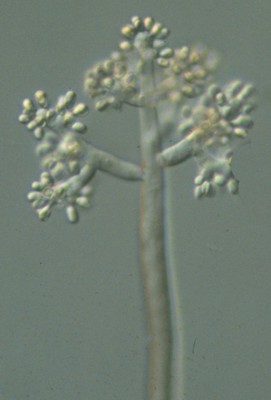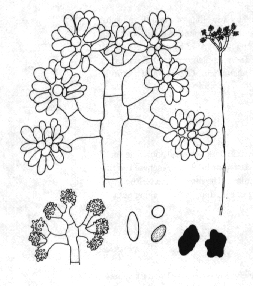Main page <> Index of descriptions <> Previous description <> Botrytis <> Next description


Botrytis
Species of Botrytis produce coarse, brown conidiophores with branched tops. The spores (conidia) cover the ultimate branches and are produced synchronously. As the colonies begin to dry, the cells of the conidiophore often flatten in alternate planes from each other. Many isolates produce black stone-like sclerotia. Often isolated from dead or living plants and frequently causing plant disease. Rotting of stored fruits and vegetables by Botrytis species is a major problem. Jarvis (1977) wrote an important overview of Botrytis that discusses many aspects of this economically important genus, although it cannot be used for identification of species.
Classification: Sclerotiniaceae (Sclerotiniales). Holomorphs: Botryotinia, Ciboria, Sclerotinia. Ref: Ellis 1971; Hennebert 1973